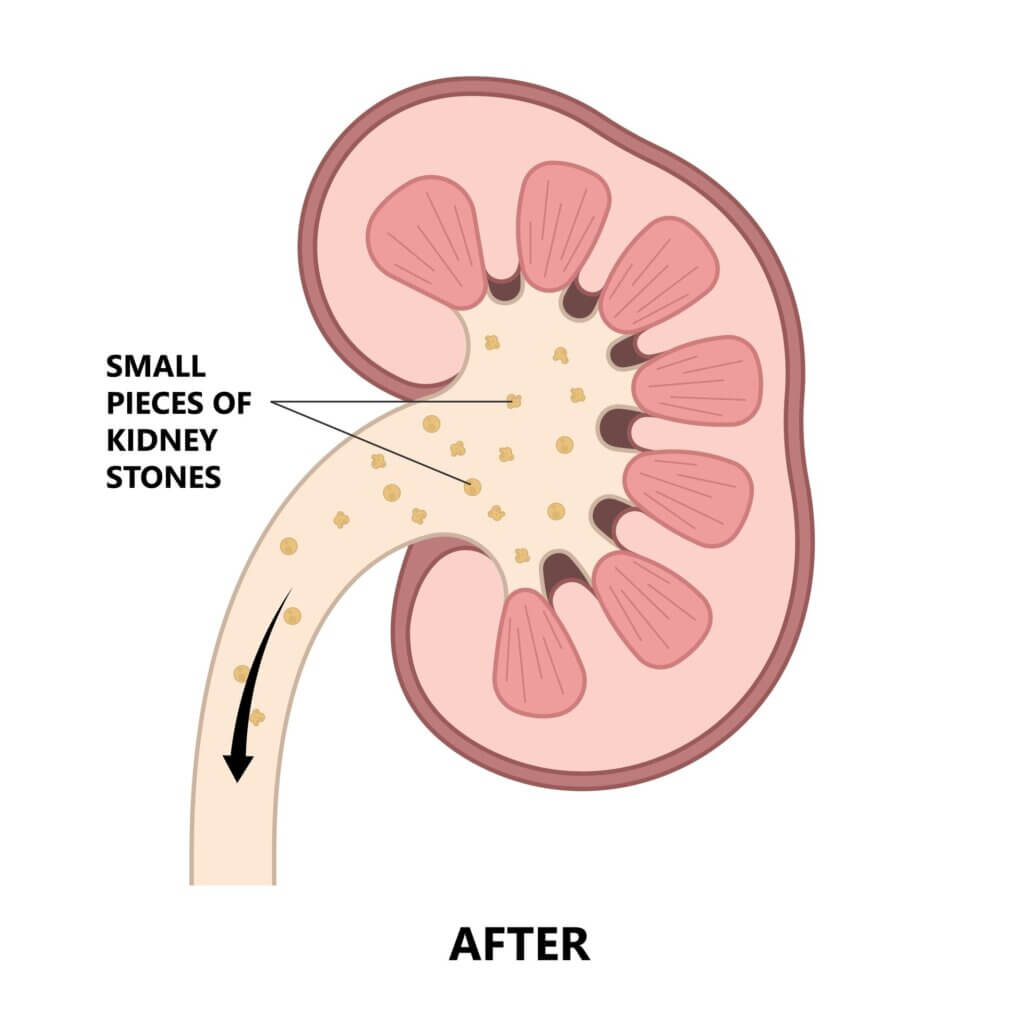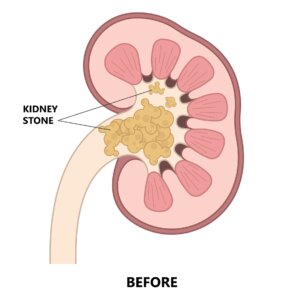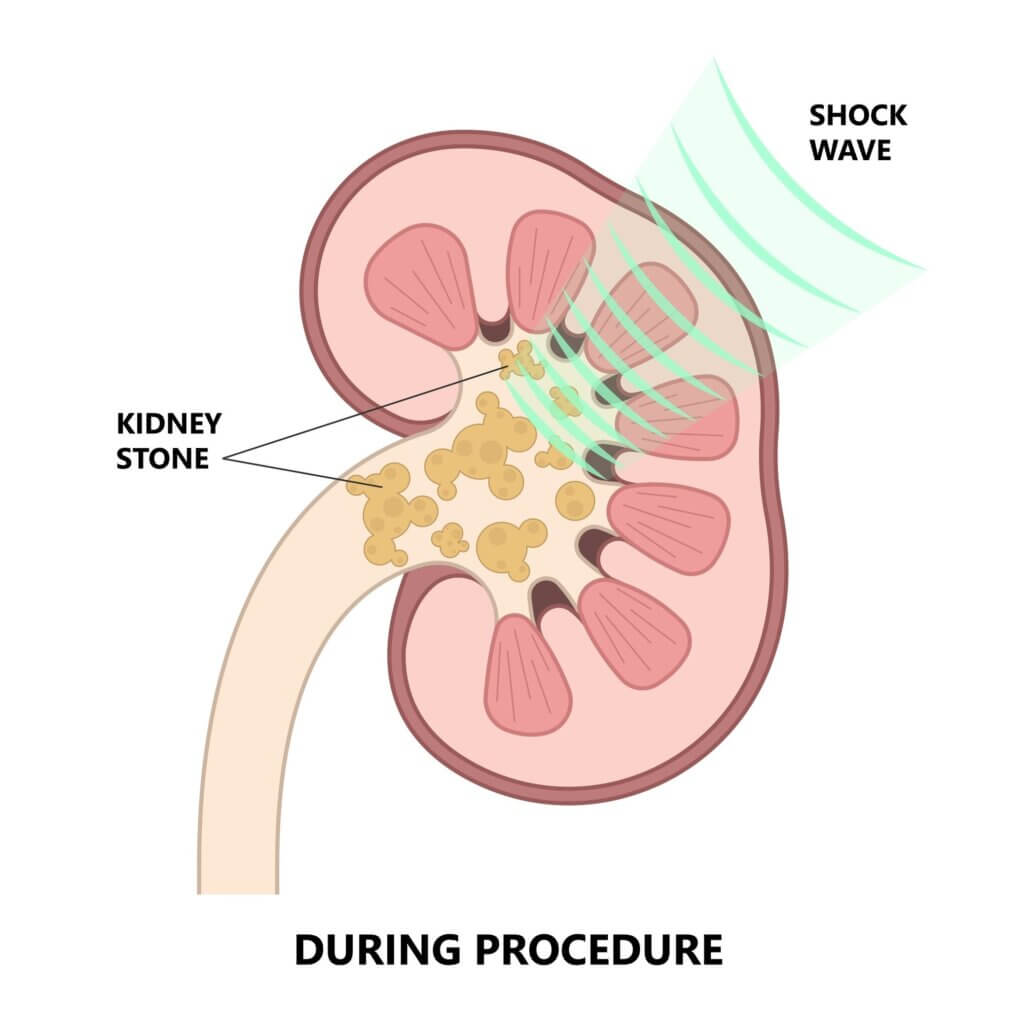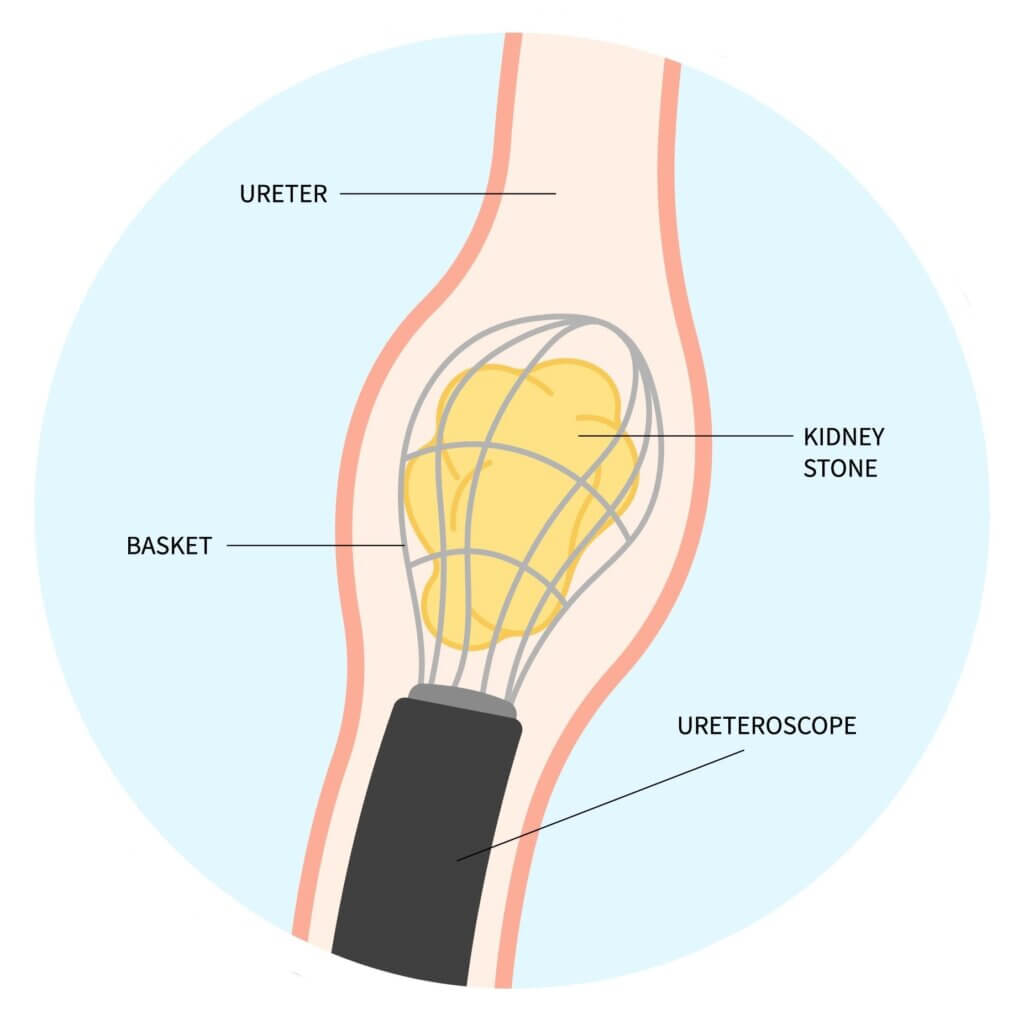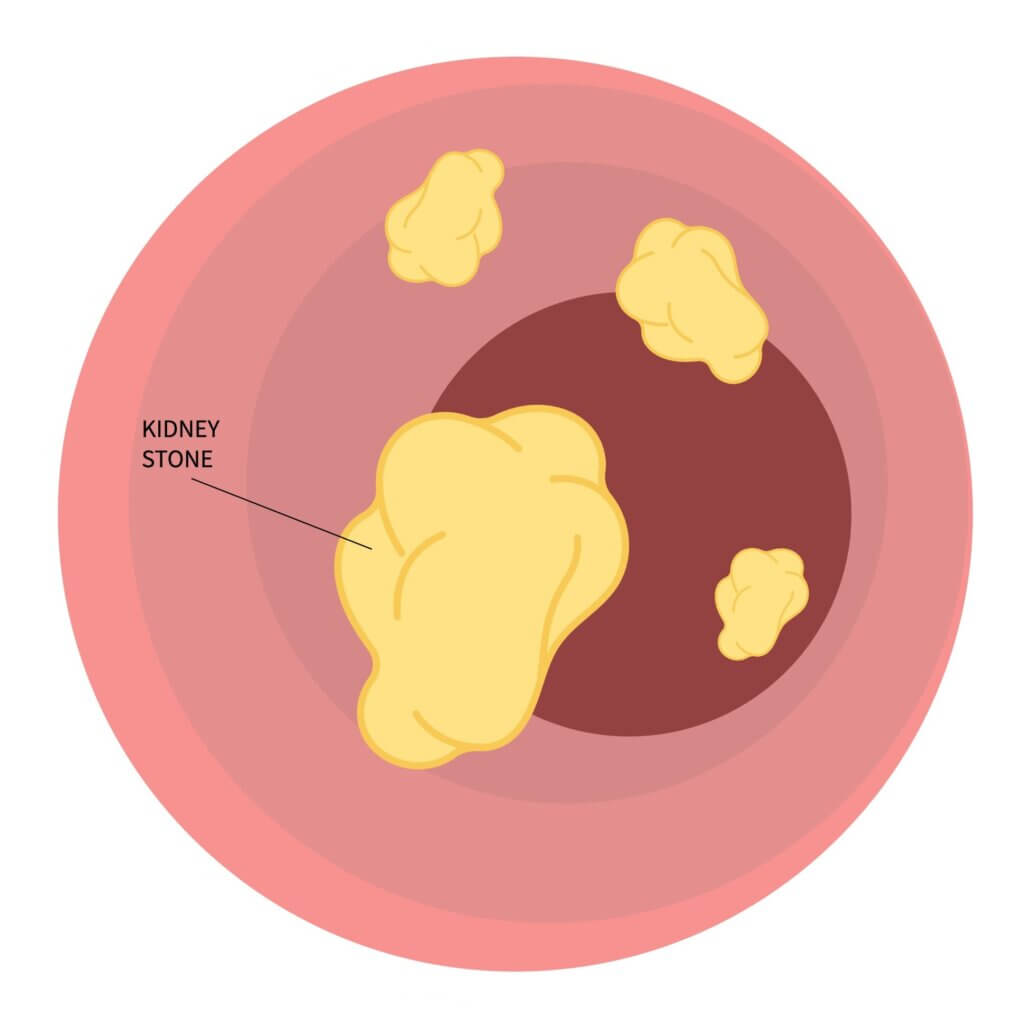Kidney Stones
Approximately 1 in 11 adults in the United States will experience a kidney stone. While kidney stones can cause pain, urination issues, and more, Singing River has treatment options to help make passing them easier.
What is a Kidney Stone?
Kidney stones are hard mineral deposits that form in your kidneys. While smaller stones are usually eliminated from your body by urination, larger stones have a difficult time traveling through the narrow tubes that connect your kidneys to your bladder.
Symptoms of Kidney Stones
Kidney stones can cause pain, urination issues, and more.
Pain
- Sharp pain in the back or side, often radiating to the lower abdomen or groin
- Waves of pain that come and go as the stone moves through the urinary tract
Urination Issues
- Painful urination with a burning or stinging sensation
- Blood in the urine, causing it to appear pink, red, or brown
- Frequent, persistent urge to urinate
- Straining and difficulty while urinating
- Passing only small amounts of urine
- Cloudy or foul-smelling urine
- Changes in urinary frequency, urgency, or overall patterns
Illness
- Fever and chills, which may be and infection caused by a blocked stone
- Nausea and vomiting due to the intense pain
Get Help For Your Kidney Stones
Make an appointment with one of Singing River’s board-certified urology partners.
Urology Clinics
Kidney Stone Treatments
The treatment for kidney stones depends on their size, location, and the severity of your symptoms. If you have small stones, you may pass them through urination on your own, and this can be managed with pain medication and by drinking more fluids to help flush them out. However, if you aren’t able to pass them by yourself or it is too painful, there are some alternative treatments. We’ll begin with some non-surgical methods of treating kidney stones.
Lithotripsy
The first procedure is a non-invasive, safe, and effective treatment called Extracorporeal Shock Wave Lithotripsy (ESWL). ESWL does not require any cuts or openings.
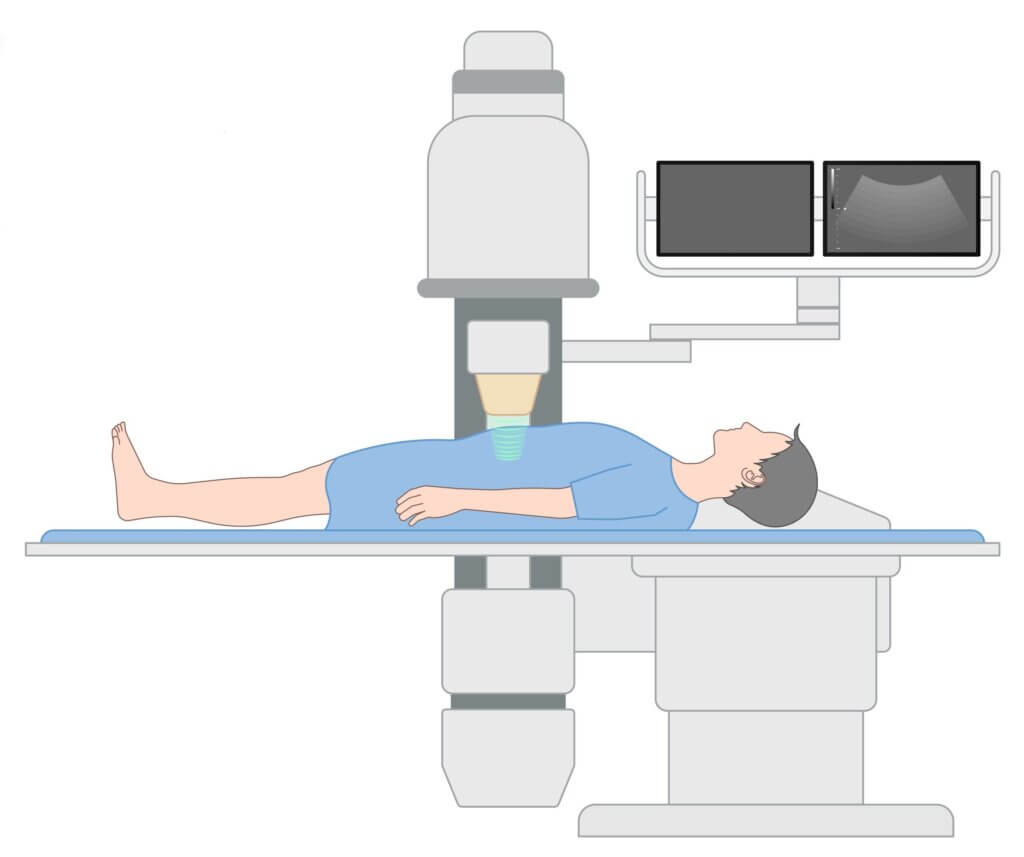
Instead, you lie down on a table, and a highly specialized machine directs controlled, high-energy waves that break your kidney stones into small fragments. You’ll pass these fragments through your urinary tract much more easily.
ESWL is a convenient and effective way to treat kidney stones, that will allow you to have a faster recovery and less pain than attempting to pass larger stones.
Ureteroscopy
Another minimally invasive procedure for kidney stones is a ureteroscopy. During a ureteroscopy, a thin, flexible tube with a camera is inserted into your urinary tract. Sedation is commonly used to ensure that you’re comfortable during the procedure.
First, the ureterscope is guided from the urethra into the bladder and then up the ureters in order to locate any stones.
Then, additional instruments are introduced through the ureterscope’s working channel to break stones into smaller pieces. Graspers and baskets enable the secure capture and retrieval of stone fragments for removal.
Get Help For Your Kidney Stones
Make an appointment with one of Singing River’s board-certified urology partners.
Urology Clinics
Kidney Stone Surgery
When kidney stones are too large, painful, or complex to be treated with EWCL or a ureteroscopy, surgical intervention is considered.
Percutaneous Nephrolithotomy (PNCL)
In the PNCL procedure, a small incision is made in your back. Your urologist will guide a small, flexible tube called a nephroscope into your kidney to suction out your kidney stones.
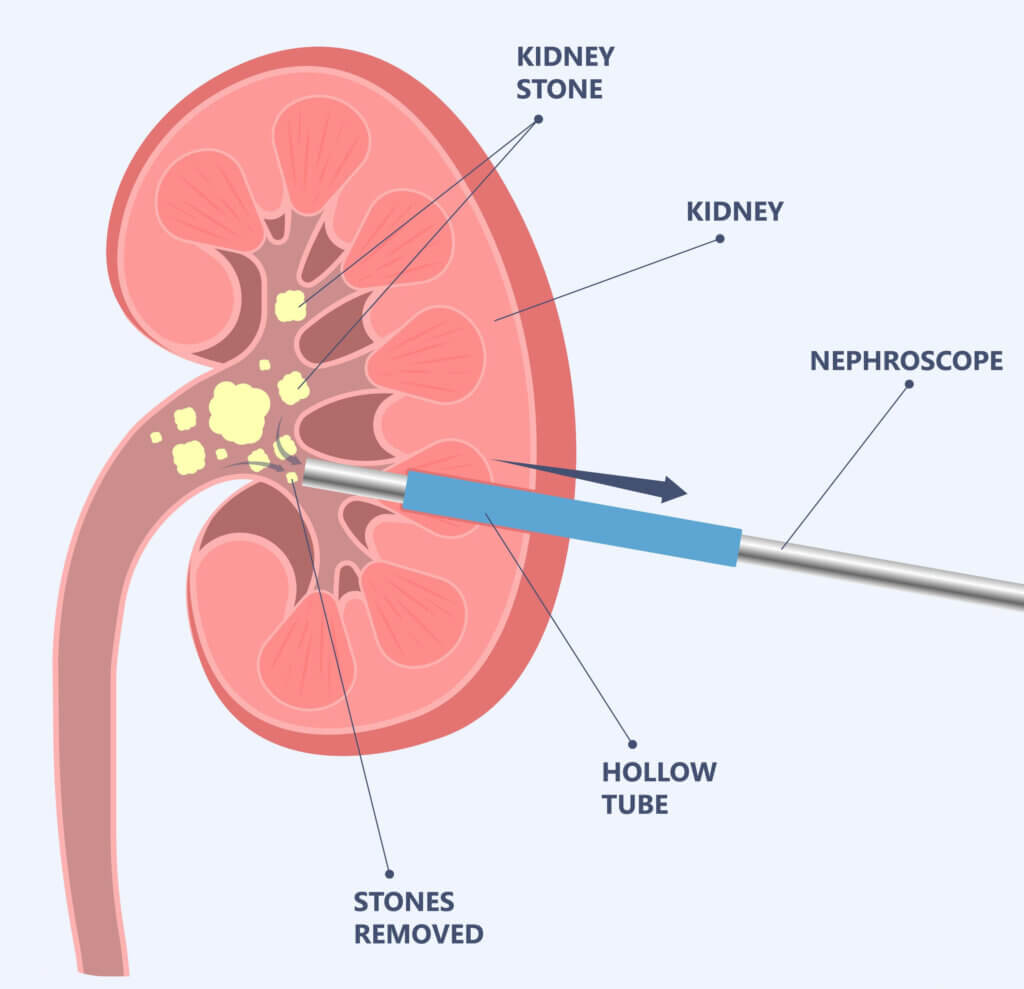
Robot-Assisted Surgery
Laparoscopic robotic systems, like the da Vinci XI Surgical System, are used to perform minimally invasive procedures for kidney stone removal and offer greater precision and control to the surgeon. These surgeries are camera-guided and done using small incisions.
